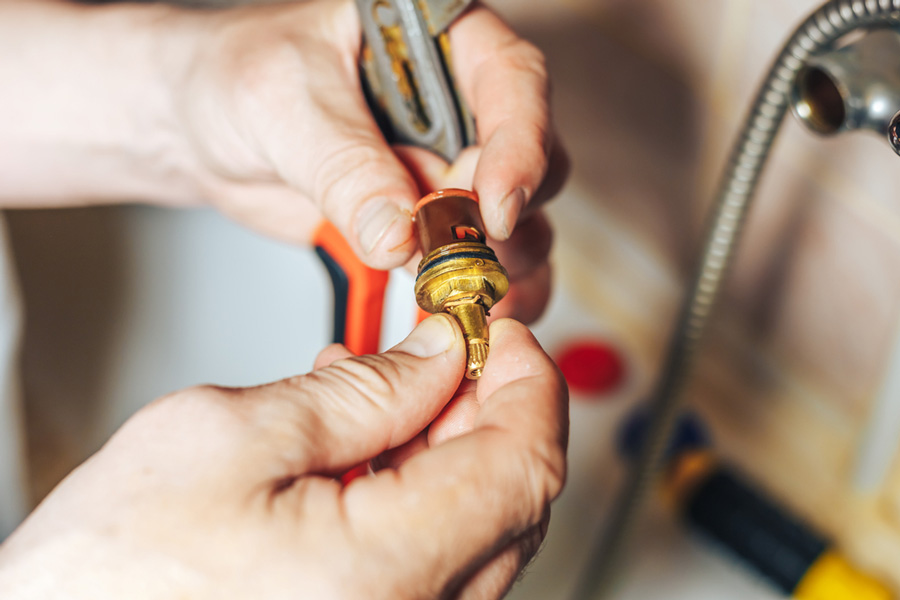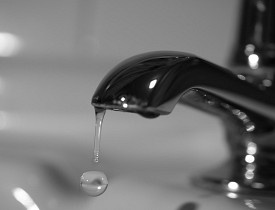The Motives Behind Dealing with a Faulty Faucet
The Motives Behind Dealing with a Faulty Faucet
Blog Article
They are making a number of great pointers on the subject of Water Dripping from Faucet: Why and How to Fix overall in this article following next.

Dripping taps may look like a minor inconvenience, yet their impact goes beyond just the annoyance of the sound. From wasting water to incurring unnecessary monetary prices and health threats, disregarding a trickling faucet can cause various repercussions. In this short article, we'll look into why it's important to resolve this common house concern without delay and successfully.
Wastefulness of Water
Ecological Impact
Trickling taps contribute considerably to water wastage. According to the Environmental Protection Agency (EPA), a single faucet dripping at one drip per secondly can waste more than 3,000 gallons of water annually. This not only pressures water sources but also affects communities and wild animals based on them.
Financial Costs
Raised Water Expenses
Beyond the environmental influence, trickling taps can blow up water costs significantly. The accumulated waste over time converts right into higher utility expenses, which could have been avoided with timely repair services.
Potential Property Damage
In addition, extended dripping can cause harm to components and surfaces bordering the faucet. Water accumulation can cause staining, deterioration, and even structural issues if left unattended, resulting in added fixing expenses.
Health and wellness Issues
Mold And Mildew and Mold Development
The constant presence of wetness from a trickling tap produces a perfect atmosphere for mold and mildew and mold development. These fungi not just endanger interior air high quality but likewise present health and wellness dangers, specifically for individuals with respiratory problems or allergic reactions.
Waterborne Diseases
Stationary water in trickling faucets can come to be a breeding ground for microorganisms and various other pathogens, increasing the risk of waterborne diseases. Impurities such as Legionella microorganisms thrive in stationary water, possibly bring about severe diseases when consumed or inhaled.
Do it yourself vs. Specialist Repair
Advantages and disadvantages of Do It Yourself Repair
While some might try to deal with a trickling faucet themselves, DIY repairs come with their own set of obstacles. Without proper understanding and devices, do it yourself attempts can worsen the issue or cause incomplete repairs, lengthening the problem.
Benefits of Working With a Specialist Plumber
Hiring an expert plumber makes certain that the underlying root cause of the dripping faucet is resolved successfully. Plumbers have the experience and tools to diagnose and fix faucet concerns efficiently, conserving time and lessening the threat of further damage.
Step-by-Step Guide to Dealing With a Dripping Tap
Devices Required
Before attempting to repair a dripping faucet, gather the required tools, including an adjustable wrench, screwdrivers, substitute components (such as washers or cartridges), and plumber's tape.
Typical Faucet Issues and Their Solutions
Identify the type of faucet and the specific concern causing the drip. Common problems include worn-out washers, rusty valve seats, or malfunctioning O-rings. Describe maker directions or online tutorials for detailed support on fixings.
Safety nets
Regular Upkeep Tips
To prevent leaking faucets, do routine upkeep such as cleaning aerators, evaluating for leaks, and changing damaged parts without delay. Additionally, think about setting up water-saving tools or upgrading to much more effective fixtures.
Value of Prompt Services
Addressing leaking faucets as quickly as they're seen stops more water wastefulness and possible damages, inevitably saving both water and money over time.
Influence On Residential Or Commercial Property Worth
Assumption of Well-Maintained Property
Maintaining a home in good condition, including attending to upkeep problems like leaking faucets, enhances its perceived worth and desirability among possible buyers or lessees.
Impact on Resale Value
Properties with properly maintained plumbing fixtures, consisting of faucets, command higher resale values in the property market. Attending to leaking faucets can add to a favorable perception during building evaluations and arrangements.
Environmental Obligation
Specific Contribution to Preservation
Taking responsibility for repairing leaking taps lines up with wider initiatives toward water conservation and ecological sustainability. Every person's actions collectively make a significant effect on protecting priceless resources.
Lasting Living Practices
By prioritizing timely repair work and taking on water-saving behaviors, individuals add to sustainable living practices that benefit both existing and future generations.
Final thought
Addressing a trickling faucet surpasses simple convenience; it's an essential step towards saving water, reducing monetary prices, and securing health and property. Whether with DIY repairs or professional aid, doing something about it to fix dripping taps is a small yet impactful means to promote liable stewardship of resources and add to a healthier, extra sustainable future.
How to Fix a Leaky Faucet: Step-by-Step Repair Guide
A leaky faucet may seem like a simple annoyance, but if it's not fixed promptly, that leak could cost hundreds to potentially thousands. From water damage to mold, mildew, and high water bills, even a tiny leak can be catastrophic if left unattended. Damage like this can even affect the overall value of your home, so it's important to take the right approach for leaky faucet repair. You may need the help of a plumber in some cases, but we've got a few tips you can try on how to fix a leaky faucet before calling the pros.
Four Faucet Types
When you're learning how to fix a leaky faucet, the first step is knowing what kind of faucet you're working with! There are four common types.
Cartridge Faucets
Cartridge faucets come in one- or two-handled varieties. In one-handled cartridge faucets, hot and cold water combines in a single cartridge. In the two-handled versions, hot and cold water are controlled separately and mixed in the faucet.
Ball Faucets
Ball faucets have a single lever you push up and down to adjust the pressure and rotate to change the temperature. A slotted metal ball controls the amount of water allowed into the spout.
Compression Washer Faucets
They're the oldest type of faucet, but they're still used in many homes — especially older ones. Compression faucets have two separate handles that, when turned, raise or lower the washer that seals a water valve. This valve stops water from flowing through the faucet when it is turned off.
Disc Faucets
Disc faucets rarely need to be repaired due to their maintenance-free design. The water flow is controlled by two discs — the upper one raises and lowers against a fixed lower disc, creating a watertight seal. If your disc faucet starts leaking, you may need to replace the seals or clean residue buildup from the inlets.
Fixing a Leaky Faucet
Step 1: Turn Off the Water
Whether you're learning how to fix a leaky bathtub faucet or how to fix a leaky kitchen faucet, always turn off the water supply to your working area when you're fixing a leak. The last thing you want is a flood added to your list of things to fix.
Look for the shutoff valves below your sink or around the tub and turn them clockwise to stop the water flow. If your faucet doesn't have shutoff valves, you may need to turn off the water for the whole house. Check to make sure it's off by turning the faucet on. If nothing comes out, you're ready to start the repair.
Step 2: Take Apart the Faucet
How you disassemble your faucet depends on the type of fixture you have. You can use a flathead screwdriver to remove the caps on top of the handle or handles for cartridge and compression faucets. Inside, you should see handle screws. Unscrew these with a screwdriver to remove the handle.
Disc- and ball-style faucets will typically have an inlet screw near the handle, and removing that will reveal the interior of the faucet.
Detach the Valve Stem
For cartridge- and compression-style faucets, you'll see the inner valve stem or cartridge once you remove the faucet handles. If you have a compression faucet, unscrew the brass valve stem. If you have a cartridge faucet, pull out the cartridge. If your cartridge has been in place for a while, it may require some tools or extra force to remove it due to mineral deposits.
Examine and Replace Parts
Once you've removed the parts, check them out to confirm what needs to be replaced. You may see corroded rubber washers, O-rings, stems, or cartridges. On a ball-style faucet, check the seats and springs for damage.
If you need to repair a leaky disc faucet, check the inlet and seals on the lower disc.
Once you determine what parts must be replaced, visit your local hardware store. Bring the damaged parts with you to ensure you can purchase the correct components to replace them.
Clean Valves and Faucet Cavity
If you've removed a stem or cartridge, you may notice mineral buildup in the faucet's threads. Use white vinegar to clean the valve seat by soaking it for a few minutes, then scrub it away with a soft toothbrush and rinse with warm water. You can also clean the interior of the faucet in the same way.
Reassemble the Faucet
Once your faucet is cleaned and the required parts have been replaced, it's time to reassemble it. Put the pieces back together and slowly turn the water supply back on. Doing this slowly is crucial because too much initial water pressure can damage the new hardware you've just installed.
https://homewarranty.firstam.com/blog/how-to-fix-leaky-faucet

Do you enjoy more info about How to Fix a Dripping or Leaky Faucet ? Create a comment below. We'd be glad to find out your views about this posting. In hopes that you visit us again later on. Do you know about somebody else who is interested by the topic? Please feel free to share it. I enjoy your readership.
Report this page